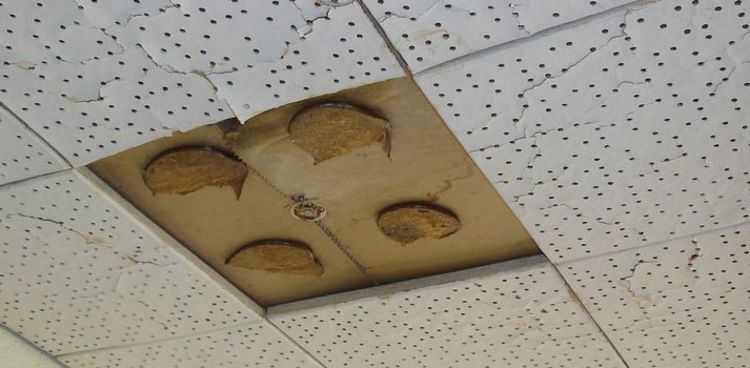Claims involving asbestos exposure in schools and the importance of disclosure of historic documents

Asbestos in schools: The extent of the problem
There has been increasing media coverage over the past few years about the prevalence of asbestos in our schools.
It is estimated that over 80% of the UK’s schools contain asbestos having been widely used in those constructed, extended or refurbished from the 1940s up to as late as 1999, when the importation, supply and use of all types of asbestos was finally banned in the UK.
Not only was asbestos used in ceilings, flooring, walls, door panels, window surrounds and cladding in schools, but also in classroom equipment, including Bunsen burner mats, asbestos paper, and asbestos noticeboards. Whilst such classroom equipment has been phased out over the years, asbestos in the fabric of school buildings has remained and become even more dangerous through dilapidation over the years.
It seems that the government is only just starting to wake up to the extent of the problem. A few weeks ago, MPs called for all asbestos to be removed from public and commercial buildings within the next 40 years, with schools being the priority.
This is certainly a very welcome step in the right direction, but what happens to those who have already been exposed to asbestos in a school setting and have gone on, or will go on, to develop an asbestos related disease as a result?
Difficulties in proving asbestos exposure in the school setting
I’ve certainly noticed an increase in the number of claims involving asbestos exposure in schools over the past few years; claims for teachers, school caretakers, laboratory assistants and school cleaners. They are notoriously difficult claims to prove because they typically concern low level asbestos exposure. A claim may, for example, be based on a teacher pinning children’s schoolwork onto asbestos insulation board or a laboratory assistant setting up chemistry lessons with asbestos Bunsen burner mats.
As with all personal injury claims, the onus is on the Claimant to prove their claim or, in other words, that a Defendant allowed them to be exposed to asbestos dust and, in so doing, their conduct fell below the standard of care expected at the time and that such exposure caused them to develop mesothelioma.
It is always necessary to take a full and detailed witness statement from the Claimant (and work colleagues where possible) in such claims just like any other asbestos disease claim. Quite often the Claimant will recall the names of former work colleagues who we can seek to trace or, even better, has kept in touch with former work colleagues. If they can corroborate the Claimant’s witness evidence, then this serves to strengthen their claim.
Unsurprisingly, the Claimant and any work colleagues are usually unable to confirm with certainty that they were handling or disturbing asbestos-containing materials. They would not necessarily have been able to recognise such a material, as say a carpenter might have done. They may be able to describe its appearance, but often the only real way of confirming that it was in fact asbestos is by looking at historic documents such as asbestos surveys relating to the school. These documents can then be considered alongside the witness evidence to consider if the Claimant may have had exposure.
To locate these documents, it is necessary to determine who had control of the school at the time the alleged asbestos exposure occurred. In the case of a state school this will be the local authority, but the school itself (if still in existence) may hold some documents too. Whilst both the local authority and school can be approached and asked to disclose any documents potentially relevant, we have to rely on their cooperation to make these documents available. It is not uncommon to be passed from pillar to post, between different local authorities who each deny that they were/are responsible for the school and have any relevant documents to disclose. Alternatively, it may be that requests for documentation go completely ignored or that only very limited documentation is made available.


The duty of disclosure
Part 31 of the Civil Procedural Rules (“CPR”) governs the position regarding the duty of standard disclosure on both parties in personal injury claims. CPR 31.6 requires parties to disclose documents on which they rely, but also which adversely affect their own case. They have a duty to make a “reasonable” search for these documents, which considers such factors as the ease and expense of retrieving them.
If a prospective party to a claim does not willingly provide standard disclosure of documentation, then there is the option to make a Pre-Action Disclosure application under CPR 31.6. Our team’s recently reported case of Sparkes (as PR of the Estate of Pauline Sparkes, Deceased) v London Pension Funds Authority and Leigh Academies Trust [2021] EWHC 1265 (QB) involved asbestos exposure suffered by a teacher whilst employed at a school in London during the 1970s. Asbestos exposure was alleged to have been in the fabric of the school building in the form of floor and ceiling tiles, wall panels and pipe lagging, which were subjected to wear and tear over the years and interference by the teacher, her colleagues and the students. There was also alleged asbestos exposure during a period of construction on the school site.
Whilst the Trust which now owned the school provided a small amount of disclosure documentation dated within the period of employment, it was not willing to provide disclosure of documentation relating to the maintenance of the school buildings dated outside this period. A Pre-Action Disclosure application was made, but unfortunately dismissed at the first Court hearing because it was found to require a search for documentation that was too broad in its scope. The application was, however, successful upon appeal. The appeal judge considered the request for additional disclosure to be a reasonable one and that the test as to what constitutes a “reasonable” search is whether the documents “may well” be relevant to the claim. In this case, we knew that the school had several boxes of old documents available and ready for inspection at its premises and that documents before and after the Claimant’s period of employment may indicate the presence of asbestos on the school site.
Disclosure: Make or Break?
This case certainly indicates how important pre-action disclosure is when investigating claims involving asbestos exposure in schools; it can make the difference between a successful and an unsuccessful claim. As an example, I am currently investigating a potential claim arising from a woman’s asbestos exposure whilst employed as a cleaner at a school during the 1970s. She cleaned the school’s laboratories every evening at the end of the school day over the course of five years and it is alleged that she was exposed to asbestos dust and fibres generated from the students and teachers handling asbestos Bunsen burner mats during lesson time. I sought disclosure of documentation from the relevant local authority, citing our Sparkes case, and was provided with documentation, which included a photograph taken during an asbestos survey carried out in the 2000s. Alarmingly, the photograph showed a stack of asbestos Bunsen burner mats stored on a trolley in one of the storage cupboards. It followed that asbestos Bunsen burner mats were once used at the school and therefore served to give the Claimant’s evidence additional weight. It also showed that the school, even as late as the 2000s, was not following guidance as far as removing or encapsulating asbestos-containing materials.
I have also previously brought another school exposure claim on behalf of the family of a woman who worked as a laboratory assistant at a private school during the 1980s and died from mesothelioma. Disclosure from the school indicated a distinct lack of documentation regarding asbestos management during the period in question. This coupled with evidence from laboratory assistants who worked in a neighbouring school at the same time as the Deceased and recalled the use of asbestos Bunsen mats, asbestos gauzes and asbestos wool between the sites. This evidence, coupled with a report from a Forensic Engineer about government guidance issued on the “safe” use of asbestos-containing materials in schools at the time resulted in a settlement being agreed with the school’s solicitors.

A fatal legacy
School exposure claims will continue to be difficult to prove, but the duty of disclosure and the ability to seek recourse through the courts if that duty is not met means that these claims can be successful, and justice can be served.
This does not, of course, take away from the fact that we are continuing to lose former school staff to asbestos-related diseases. These teachers, caretakers and school assistants dedicated years of their lives to their jobs and have paid the ultimate price, in the loss of their lives. It can't continue.
Acorn Analytical Services based in Northampton is running a campaign to raise awareness of the presence of asbestos in the UK’s schools. To mark Global Asbestos Awareness Week at the beginning of April, it announced that it was creating an online memorial for school staff who have sadly lost their lives as a result of asbestos related diseases. The memorial will include photographs and short biographies for each person with the aim of highlighting the ongoing issue of asbestos in our schools and preventing more lives being lost as a result. Contributions to the online memorial can be made by emailing [email protected].



